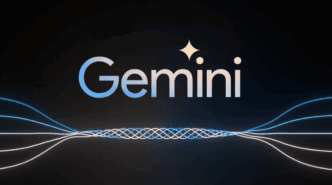Google is rolling out a fresh set of tools designed to make AI language learning more practical and personal. These experiments are part of Google Labs and aim to help users speak more naturally in real-life scenarios. Powered by Gemini, Google’s latest large language model, the new tools could challenge popular apps like Duolingo.
The goal is clear: make learning feel less like school and more like real life.
Learning Phrases That Matter in the Moment
One common challenge when learning a new language is knowing what to say in unexpected situations. That’s where Google’s Tiny Lesson comes in. Instead of following rigid lesson plans, this tool lets you describe a moment—like “I lost my passport”—and gives you words, grammar tips, and helpful replies such as “I don’t know where I lost it” or “I want to report it to the police.” It’s a fast way to prepare for everyday problems.
The second tool, called Slang Hang, helps you sound more like a local. Many language learners end up speaking too formally. This tool shows how real conversations unfold. For example, you can read a chat between a street vendor and a customer. Or see how two old friends might talk after bumping into each other on the subway.
Each message appears one at a time, just like a real conversation. You can hover over any slang to see what it means. But Google warns that its AI may still make mistakes with slang or invent fake words, so it’s best to double-check anything unfamiliar.
Learn from Your Surroundings
The third tool, Word Cam, takes a more visual approach. You use your phone’s camera to take a photo of your environment. The AI then labels visible objects in the language you’re learning. For instance, you might know “window,” but not “blinds.” This tool shows you both, plus other words you can use to describe what you see.
This experiment is especially useful for visual learners and travelers. It shows how much you can learn from simple, everyday things.
All three tools support many languages. These include Arabic, Chinese (China, Hong Kong, and Taiwan), English (U.S., U.K., Australia), French (France and Canada), German, Greek, Hebrew, Hindi, Italian, Japanese, Korean, Portuguese (Brazil and Portugal), Russian, Spanish (Spain and Latin America), and Turkish.
Google says these tools are just the beginning. They’re part of a larger plan to use AI to make learning more dynamic, independent, and useful.
You can try the new Google AI language learning tools now by visiting Google Labs.












